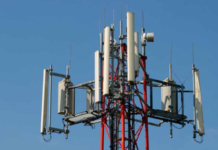Google to Link Africa, Australia with New Subsea Cable
Google has announced plans to build Umoja, the first-ever fibre-optic cable directly connecting Africa with Australia.
This groundbreaking project is poised to significantly enhance digital connectivity and economic integration between the two continents, according to a statement by the firm on Thursday.
Anchored in Kenya, the Umoja cable will pass through several African countries, including Uganda, Rwanda, the Democratic Republic of the Congo, Zambia, Zimbabwe, and South Africa, before making its way across the Indian Ocean to Australia.
The route also incorporates the Google Cloud region in South Africa, ensuring robust cloud service connectivity.
Google said, in collaboration with Liquid Technologies, the Umoja cable would provide a highly scalable network path, featuring multiple access points to facilitate broader regional connectivity.
This infrastructure was designed to deliver reliable and expansive digital services, addressing the chronic issue of network outages that have historically plagued the region, the search engine giant stated.
Named after the Swahili word for “unity,” Umoja is a part of Google’s Africa Connect initiative, which includes the Equiano subsea cable project.
Google said the project was made possible with partnerships from leaders across Africa and Australia, stating that the project aimed to connect African people, businesses, and governments.
Reacting to this development, the U.S. Ambassador to Kenya, Meg Whitman, said access to the latest technology, supported by reliable and resilient digital infrastructure, was critical to growing economic opportunity.
“This is a meaningful moment for Kenya’s digital transformation journey, and the benefits of today’s announcement will cascade across the region,” he remarked.
In addition to today’s infrastructure announcement, Google will sign a Statement of Collaboration with Kenya’s Ministry of Information Communications and The Digital Economy to accelerate joint efforts in cybersecurity, growing data-driven innovation, digital upskilling, and responsibly and safely deploying AI for societal benefits.
Kenyan President Dr William Ruto expressed his pleasure regarding Google’s investment in digital connectivity, calling it a historic achievement for Kenya, Africa, and Australia.
He noted that the new intercontinental fibre optic route would greatly improve the country’s global and regional digital infrastructure.
“This initiative is crucial in ensuring the redundancy and resilience of our region’s connectivity to the rest of the world, especially in light of recent disruptions caused by cuts to sub-sea cables.
“By strengthening our digital backbone, we are not only improving reliability but also paving the way for increased digital inclusion, innovation, and economic opportunities for our people and businesses,” Ruto said.
Since Google opened its first Sub-Saharan Africa office in Nairobi in 2007, it has partnered with governments from countries across Africa on numerous digital initiatives.
In 2021, Google said it committed to investing $1bn in Africa over five years to support a range of efforts, from improved connectivity to investment in startups, to help boost Africa’s digital transformation.
Since then, Google has invested more than $900m in the region and expects to fulfil its commitment by 2026.
The Australian Minister for Communications, Hon Michelle Rowland MP, said, “Diversifying Australia’s connectivity and supporting digital inclusion across the globe are both incredibly important objectives, and Google’s Umoja cable will help to do just that.
Australia welcomes Google’s investment and congratulates all those involved in undertaking this crucial initiative.”
As part of the collaboration, Google Cloud and Kenya will announce a partnership to strengthen Kenya’s cybersecurity.
The Department of Immigration and Citizen Services is evaluating Google Cloud’s CyberShield solution and Mandiant expertise to strengthen the defence of its eCitizen platform.
CyberShield enables governments to build enhanced cyber threat capabilities, protect web-facing infrastructure, and help teams develop skills and processes that drive effective security operations.
















